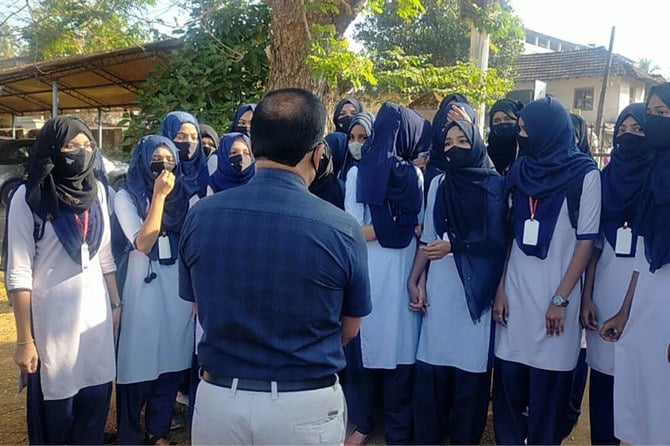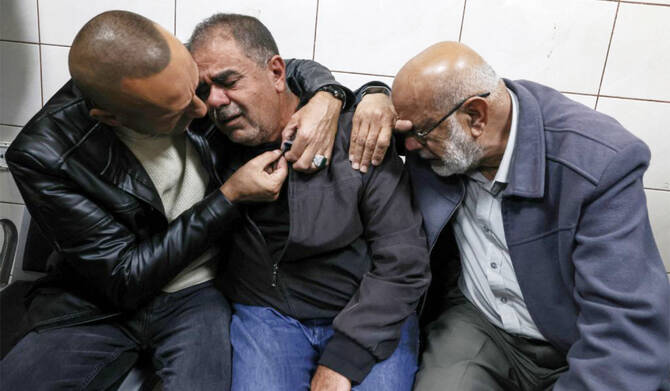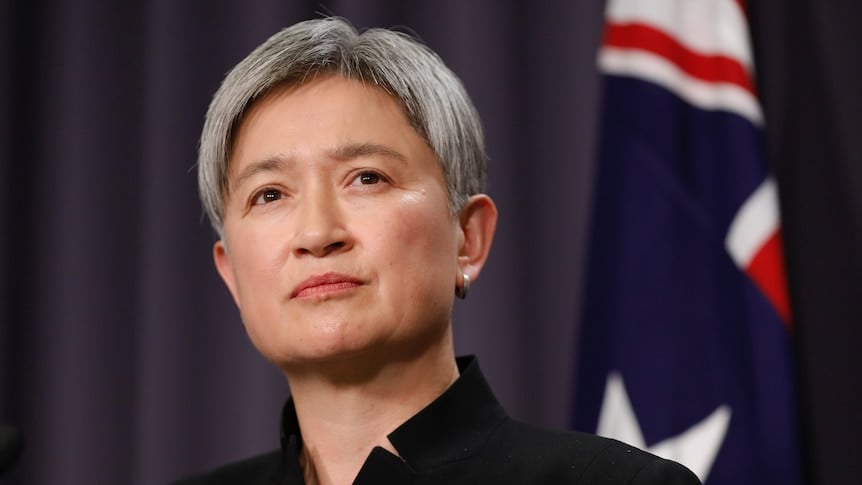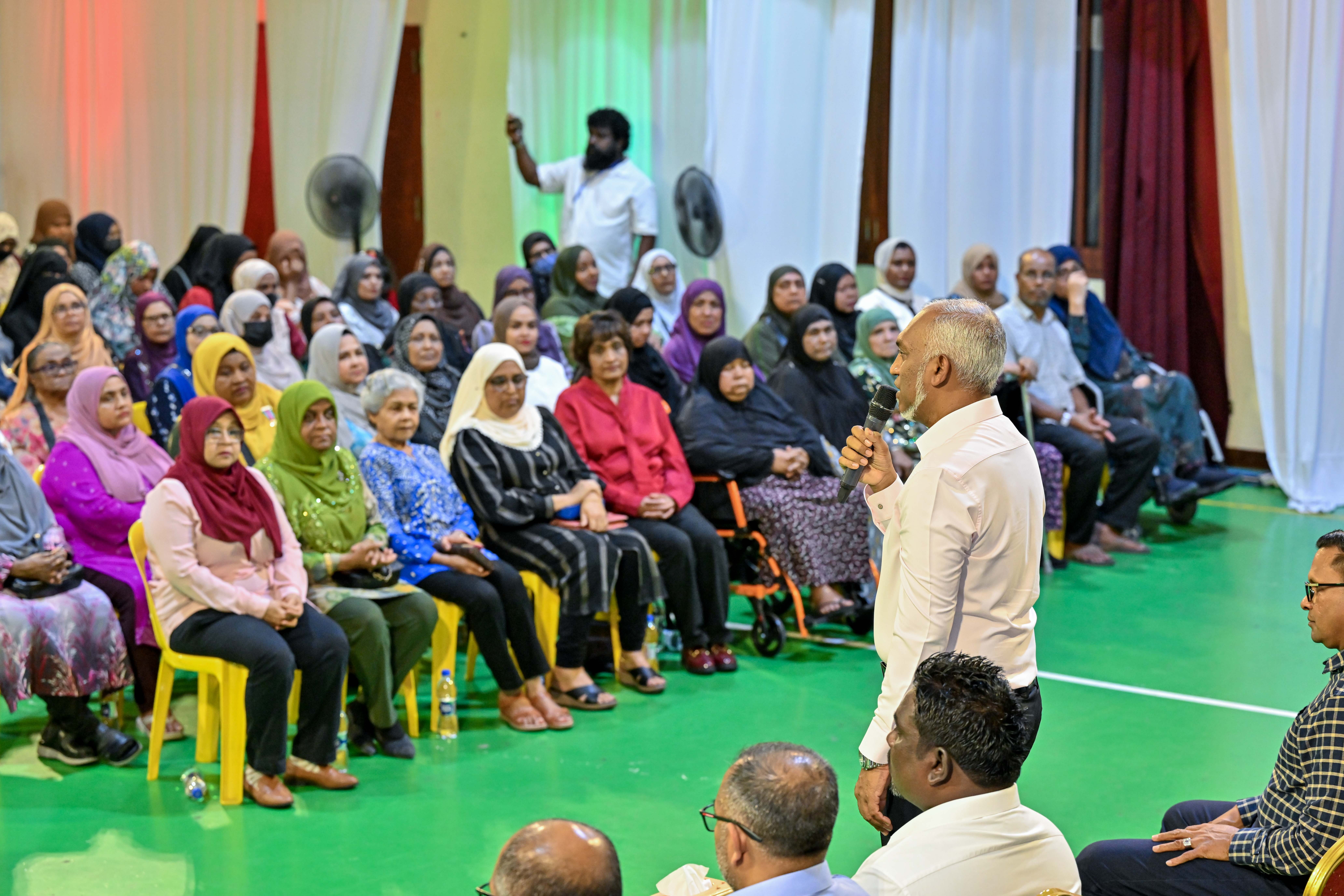When the students were barred last month from entering their classrooms and told not to wear hijab, a headscarf used by Muslim women, they began camping outside the all-girls high school.
The story cascaded across the Internet, drawing news crews to the front of the government-run school in Udupi district, in the southern Indian state of Karnataka.
The students began protesting outside the school gate and sat huddled in a group, reading their lessons. The school staff, which said the students were defying uniform rules, remained unmoved.
A month on, more schools have begun implementing a similar ban on hijabs, forcing the state’s top court to step in. It will hear petitions filed by the protesting students on Tuesday and rule on whether to overturn the ban.
But the uneasy standoff has raised fears among the state’s Muslim students who say they are being deprived of their religious rights. On Monday, hundreds of them, including their parents, took to the streets against the restrictions, demanding that students should be allowed to attend classes even if they are wearing hijab.
“What we are witnessing is a form of religious apartheid. The decree is discriminatory and it disproportionately affects Muslim women,” said A. H. Almas, an 18-year-old student who has been part of the weeks-long protests.
So far several meetings between the staff, government representatives, and the protesting students have failed to resolve the issue. The state’s education minister, B. C. Nagesh, has also refused to lift the ban. He told reporters Sunday that “those unwilling to follow uniform dress code can explore other options.”
For many Muslim women, the hijab is part of their Islamic faith. It has for decades been a source of controversy in some western countries, particularly in France, which in 2004 banned it from being worn in public schools. But in India, where Muslims make up almost 14 percent of the country’s near 1.4 billion people, it is neither banned nor is its use restricted in public places.
The story cascaded across the Internet, drawing news crews to the front of the government-run school in Udupi district, in the southern Indian state of Karnataka.
The students began protesting outside the school gate and sat huddled in a group, reading their lessons. The school staff, which said the students were defying uniform rules, remained unmoved.
A month on, more schools have begun implementing a similar ban on hijabs, forcing the state’s top court to step in. It will hear petitions filed by the protesting students on Tuesday and rule on whether to overturn the ban.
But the uneasy standoff has raised fears among the state’s Muslim students who say they are being deprived of their religious rights. On Monday, hundreds of them, including their parents, took to the streets against the restrictions, demanding that students should be allowed to attend classes even if they are wearing hijab.
“What we are witnessing is a form of religious apartheid. The decree is discriminatory and it disproportionately affects Muslim women,” said A. H. Almas, an 18-year-old student who has been part of the weeks-long protests.
So far several meetings between the staff, government representatives, and the protesting students have failed to resolve the issue. The state’s education minister, B. C. Nagesh, has also refused to lift the ban. He told reporters Sunday that “those unwilling to follow uniform dress code can explore other options.”
For many Muslim women, the hijab is part of their Islamic faith. It has for decades been a source of controversy in some western countries, particularly in France, which in 2004 banned it from being worn in public schools. But in India, where Muslims make up almost 14 percent of the country’s near 1.4 billion people, it is neither banned nor is its use restricted in public places.


















